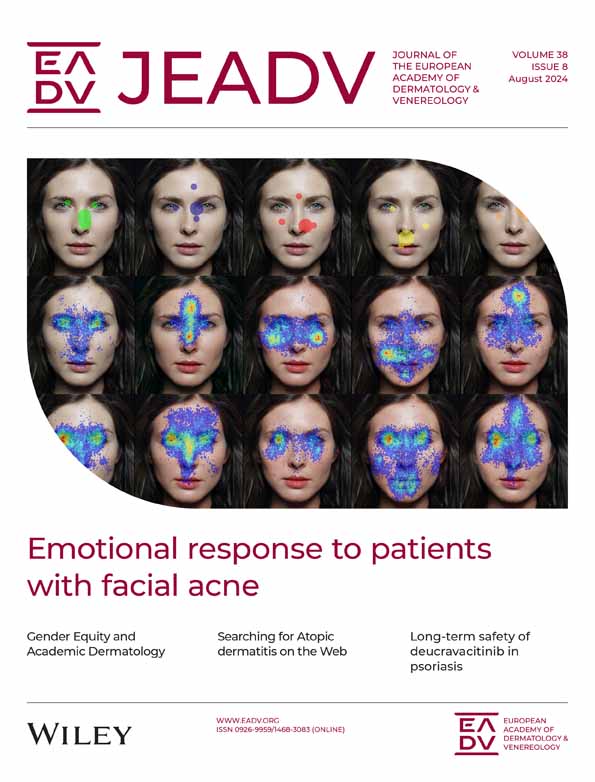Spatial transcriptomic analysis of tumour–immune cell interactions in melanoma arising from congenital melanocytic nevus
Youngkyoung Lim and Beom Keun Cho contributed equally as co-first authors to this study.
Linked article: E. Soura et al. J Eur Acad Dermatol Venereol 2024;38:1459–1460. https://doi.org/10.1111/jdv.20173.
Abstract
Background
Studies on the interaction between tumour-infiltrating immune cells (TIICs) and tumour cells in melanoma arising from congenital melanocytic nevus (CMN) are lacking.
Objective
The aim of this study was to determine the intratumoral immune landscape of TIICs and tumour cells during invasion and metastasis.
Methods
Tissue specimens were obtained from patients with melanoma originating from CMN. Differential gene expression in melanoma cells and TIICs during invasion and metastasis was determined using spatial transcriptomics.
Results
As invasion depth increased, the expression of LGALS3, known to induce tumour-driven immunosuppression, increased in melanoma cells. In T cells, the expression of genes that inhibit T-cell activation increased with increasing invasion depth. In macrophages, the expression of genes related to the anti-inflammatory M2 phenotype was upregulated with increasing invasion depth. Compared to primary tumour cells, melanoma cells in metastatic lesions showed upregulated expression of genes associated with cancer immune evasion, including AXL and EPHA2, which impede T-cell recruitment, and BST2, associated with M2 polarization. Furthermore, T cells showed increased expression of genes related to immunosuppression, and macrophages exhibited increased expression of genes associated with the M2 phenotype.
Conclusions
The interaction between melanomas arising from CMN and TIICs may be important for tumour progression and metastasis.
CONFLICT OF INTEREST STATEMENT
The authors have no conflicts of interest to declare.
Open Research
DATA AVAILABILITY STATEMENT
The study's supporting data can be obtained from the corresponding author on reasonable request.




